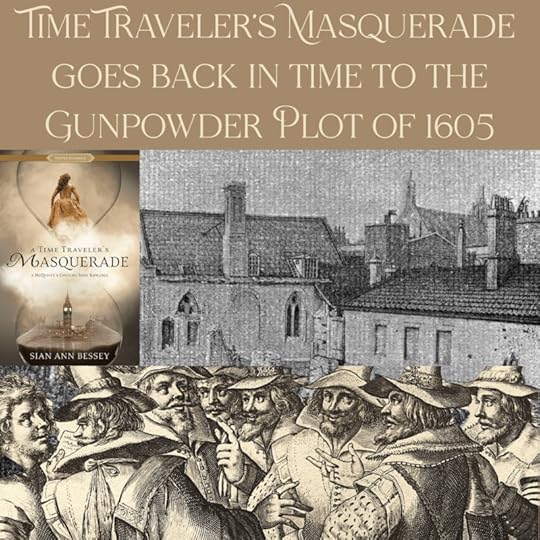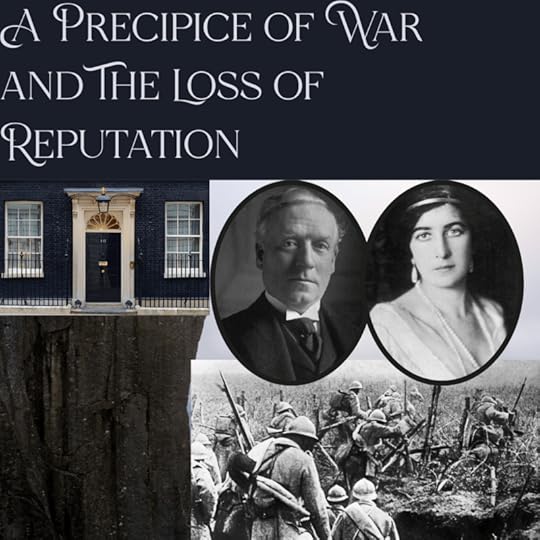Cynthia Sally Haggard's Blog: Cynthia Sally's Blog, page 5
July 1, 2025
Cordoba
Today I woke up to pouring rain and thick mist. So I dressed, and got ready for our day in Cordoba.
We left at around 9 am and drove the 106 km (66 miles) to Cordoba, arriving at around 10:45 am. The bus left us off at the Roman Bridge over the Guadalquivir, which we crossed to meet our tour guide, Lola from Cordoba, just outside the Mesquite (Mosque in Spanish.)
Of course, even on this rainy Thursday, the Mesquite was heaving with tourists, but Lola did at least explain the expansion of the Mosque over time, starting in 786 under Abd al-Rahman I and ending in 1607 with the completion of the Christian Church.
When I visited it before in 2015, I resented the imposition of a Catholic Church in the middle of this marvelous mosque. For the mosque has a horizontal structure, conveying equality and respect amongst the people. While the Church is tall and vertical, imposing a hierarchy on everyone, meaniing that most are at the bottom of the pile. Apparently, we can blame the Holy Roman Emperor Charles V (1500-1558) who was also Charles I of Spain. The bishop who was trying to build a church in the mosque was threatened with death. So he appealed to Charles, who told him to go ahead. But Charles was Holy Roman Emperor, which meant that he had to spend a great deal of time in Germany and the Low Countries. By the time he arrived in Cordoba, he saw that a grave mistake had been made, and remarked that he would not have allowed the Cordoba Mosque to be partially destroyed in order to build a church.
But sometimes bad things turn into good things. At one time there were 300 mosques in Cordoba. All of them are now gone, except for the Mesquite. Why? Because the Christians used the building every day to come and worship, and so the mosque was protected from destruction.
Lola told us about those famous horseshoe shaped columns of the Mosque, telling us they were made out of brick and limestone. Because limestone was softer than brick, the whole structure provided some flexibiliy. By contrast, the church was built entirely of white marble. When the 1755 earthquake hit, the church acquired cracks. But the mosque, which was 800 years older, survived with no damage whatsoever.
After that, we went to the Jewish Quarter to see the famous bust and statue of Maimonides, the great Jewish philosopher. Lola pointed out that he was dressed as a Muslim, because he lived amongst those people. After that, we dispersed for lunch and I had a delicious red tuna tartare in creamy galic soup that was delicious!
 The post Cordoba appeared first on Cynthia Sally Haggard.
The post Cordoba appeared first on Cynthia Sally Haggard.
June 27, 2025
THE FOUNDLING by Georgette Heyer
THE FOUNDLING by Georgette Heyer is one of her wonderful Georgian Regency novels. Set in 1818, when George III had gone mad, Queen Charlotte was seriously ill, and the Prince Regent ruled England before becoming George IV, it has alll of the liveliness, nonsense and wonderful characters that you’d expect from this talented writer.
Needless to say, a young man has got into a scrape. Matt, the cousin of the Duke of Sale, is being sued for breach of contract after a series of impassioned letters that he wrote to a young miss have been picked up by an unscrupulous con artist, who reckons he can get £5,000 for the blackmail. The claim is that Matt dumped this young woman, and that therefore he can be sued.
Of course Matt does not have £5,000. But his cousin, the vastly rich Duke of Sale does, and so the frolic begins when Sale, a very young Duke (only 24 years old) decides to help Matt.
Along the way, we meet the object of Matt’s affections, the stunningly beautiful Belinda, the foundling of this tale. As a foundling, Belinda does not have parents or even a last name. She has been brought up in a orphanage so she can read and write and sew. But she is one of those people with champagne tastes and a beer budget.
I found Belinda to be an extremely interesting character for I had never met anyone like her before. She is like a moth that dances before a flame (usually the attentions of a young man) before darting off in some other direction. Belinda is not the brightest spark in the matchbox. She is hopeless at giving directions, remembering names, or even giving a coherent account of her life. And so, when the Duke of Sale puts her under his protection, he is led a merry dance trying to find a suitable husband for her.
Eventually, everything works out in a satsifactory manner. But what adventures the young duke of Sale has!. And what an eccentric entourage he attracts, including not only the beautiful Belinda, but Thomas Mamble, a teenage runaway, and Swithin Liversedge, the con artist who is trying to make a packet out of Matt’s indiscretion.
Ms. Heyer has quite the ear for dialect and this adds greatly to the texture of the prose. If you have never read Georgette Heyer before, you might want to start with this novel.
 The post THE FOUNDLING by Georgette Heyer appeared first on Cynthia Sally Haggard.
The post THE FOUNDLING by Georgette Heyer appeared first on Cynthia Sally Haggard.
June 24, 2025
A Day in Seville, Spain
Today, the weather changed, with pouring rain and wind.
The day started out well enough. True, the clouds looked ominous, but there was plenty of blue sky. It took us only 35 minutes to get from our Parador at Carmona (which happened to be Peter I of Castile’s castle) to Seville, where the coach stopped on the waterfront of the Guadalquivir river. Turns out Seville was an important port city during the Middle Ages. Even though it is located 65 miles from the Atlantic, it is navigable all the way up to Seville and beyond. Also, Magellan and Chrisopher Columbus set off on their trips to the New World from Seville.
Lidia was the name of our tour guide and she hopped on the bus when we stopped momentarily at the river. Then she took us on a bus tour of old town Seville, saying it was the most efficient way as the walls that surround old town are 6 miles long. We went past all the buildings built for the 1929 Iberia-American Expo, before getting off the bus in the Santa Cruz area of the city.
Santa Cruz is the part with all the tourist attractions as The Alcazar and the Cathedral are located here. After a brief walk around (not very pleasant as the place was heaving with tourists as if it were August), we finally entered the Alcazar. Because parts of Season 5 of Game of Thrones was filmed here, they now require you to have a time ticket plus your passport so they can check you in. I recognized it from my previous visit, but it was wonderful to have Lidia fill in all the details. Apparently, the Alcazar is the Royal Palace and has been so since the time of Peter I of Castile. This is the same Peter who built the Parador at Carmona where we are staying.
The gardens of the Alcazar were lovely, and I would have stayed but they were swarming with tourists. So at the end of the tour, I headed out to find lunch, finally settling on the Taverna Belmonte. Others of our group arrived while we were eating. As I was starving (I’d had no breakfast) I ordered gazpacho followed by fried cuttlefish along with a glass of red wine. The gazpacho was pink pureed soup served in a wine glass, completely unlike the gazpacho I make in the United States, where everything is chopped up. However, it was delicious. I was a little dubious about ordering fried fish, but as they had no grilled fish and I didn’t want the inevitable meat dish, I sighed and ordered it.
I was pleasantly surprised. It was only lightly fried, meaning it was possible to taste the fish. After that, I ordered a cappuccino, but of course they didn’t have the machine to make it so I had to content myself with a cafe con leche (coffee with milk) instead. I also ordered chocolate cake, which came with a glaze of caramel and two spoons of light cream. Delicous!
After all that, I rose to my feet and went for a long walk, determined to get away from all the tourists. I found my way down to the river front, to the Torre del Oro (Tower of Gold) which is where both Magellan and Christopher Columbus left on their voyages. Nearby, sitting in the water was a replica of one of the five ships Magellan took with him on his voyage of circumnavigation, along with around 250 men. They returned without Magellan (who died in the Phillippines) with only one ship (the replica on the Guadalquivir today) and 18 men.
By this time, the wind was picking up, and there was nowhere for me to sit and rest my sore feet, so I made my way back to the Alcazar, planning to visit the cathedral. Of course I stood in the wrong line for tickets – it was for those who had purchased tickets online. Of course, it was starting to pour again, so I had to run around the cathedral with my umbrella half-open as flimsly protection, until I was able to get inside and purchase the €14 ticket. Expensive, but well worth avoiding the downpour that followed.
I sat down in the first seat I could find, then got up and wandered around. The cathedral is enormous and overdone, but there is something splendid in all that gold leaf. At 3:40 I rose to my feet and made my way to the Tourist Information Center near the Alcazar for the 4pm meeting.We were going back to the Parador and my sore feet really needed it!
 The post A Day in Seville, Spain appeared first on Cynthia Sally Haggard.
The post A Day in Seville, Spain appeared first on Cynthia Sally Haggard.
June 20, 2025
Travel day from Évora Portugal to Carmona Spain
Today, I rose at 6 am as the suitcases had to be at the door by 7 am. At 8:30 am, we departed for Carmona in Spain, but I persuaded our tour guide to let me walk down early as I have motion sickness problems and needed to snag a seat near the front. My plan is to have the second seat on the right-hand side as that gives me a wonderful view out of the window for driving on the right, a tolerably decent view out of the front, and doesn’t annoy my tour-mates as I am not sitting in either of the front seats.
We set off for Mérida, part of the provice of Badajoz, and the capital of Extremadura. At our first stop at a petrol station, I managed to convice some people to make me a ham and cheese sandwich on croissant, and sell me two bottles of white wine (medium and small.) My method of communication was to type what I wanted to say into google, and add the phrase “in Spanish” and then read it back to them. It worked!
Mérida’s main claim to fame is the amphitheatre (that hosted the gladiators, animal hunts and executions), and the theatre, which hosted the plays. Of the two, the theatre was much more impressive as it had the orignal Roman colums there, plus four original statues. The young man who was our local tour guide was so much better than the tour guide who’d taken us around Evora, that I realized how boring she’d been. He took us through the sites with energy and enthusiasm, so much so that I was able to stand still to listen to him.
After that, it was lunch time. He advised us to have lunch first, then go and walk to the Roman Bridge (thirty minutes each way), and then go to the Archealogical Museum (free) and use the toilets there.
I found a rather touristy place for lunch, where the people didn’t speak English. Nevertheless, I ordered an Ensalada Avocado and red wine (vino tinto), which proved to be much tastier than its Portuguese cousin. After that, I set out on my errands. Because the toilets at the pit stop hadn’t had soap or water in them, I went around the corner to a pharmacy to buy hand wipes. Again, the people didn’t speak English, but using my Google method (which I prepared while standing in line) I was able to get the man to understand what I wanted.
Next, I decided I needed dessert. I spent most of my free time finding a bakery, which sold various items. Most of these seeemed to be extremely carby and sweet. So I opted for Opera Cake, which I split into two when I got to the Parador at Carmona.
Our Tour Guide gave us until 3pm to enjoy Mérida. Unfortunately, a couple of people (the couple sharing the front seat in front of me) were missing. Even more unfortunately, they’d left their iPhone on the floor under their seat, so that when the tour guide called them, the phone rang under the seat. (Not helpful!) Eventually, he found them and we set off at 3:30 pm, thirty minutes late.
We made another pit stop, where I spent my time ordering coffee. I wanted a hot chocolate, but when I said “chocolate calde” they either didn’t understand, or said they didn’t have it. So I ordered a cafe con leche instead, as I was told that everyone did that in Spain. Because I wanted to go to sleep tonight, I had only 5 sips, before leaving it. Then I went to find a snack, as I hadn’t had anything other than lunch, and found a small Twix, which I devoured.
Eventually, we arrived at our Parador, built on the site of the medieval castle of Peter of Castile. Needless to say it commands a fine view over the gentle countryside. The only fly in the ointment was when I discovered I could not get my old-fashioned key out of the door. Silly me! I had to turn it so that it was horizontal, not vertical, before it eased out of the lock.
 The post Travel day from Évora Portugal to Carmona Spain appeared first on Cynthia Sally Haggard.
The post Travel day from Évora Portugal to Carmona Spain appeared first on Cynthia Sally Haggard.
CARVING SHADOWS INTO GOLD by Brigid Kemmerer
CARVING SHADOWS INTO GOLD is a transition novel. By that, I mean that it is not a standalone novel. Which means that if you read it without reading the FORGING SILVER INTO STARS, the first novel of the series, you are really going to have a hard time understanding what on earth is going on.
Matters are not helped by the fact that author Brigid Kemmerer literally throws you into the deep end. It took me several chapters to figure out that the events before me took place only a week after the ending of FORGING SILVER INTO STARS. When the Royal Family of Syl Shallow was attacked. When three-year-old Silla (sp?) nearly witnessed her own mother being murdered before her. When Nora, Callyn’s younger sister, would have died of a knife wound had not Callyn’s magic saved her.
And that is really what this novel is about, this whole issue of magic. Some people see its many benefits. For example, the people of liberal Emberfall (Canada?) are mostly comfotable with its uses. But in next door Syl Shallow (USA?), which is much more conservative, magic is regarded with a great deal of suspicion.
This kind of divisiveness is all-too-common in today’s political climate, And I really love the way in which Ms. Kemmerer deals with it. You only have to replace Magic, with some hot-button issue to see how relevent this novel is. It really sounds like she is talking about the differing attitudes in the USA and Canada to vaccines, or abortions, or any of a number of fraught issues. One of the tragic consequences in CARVING SHADOWS INTO GOLD of this intolerance to magic, is that the Queen’s family is not altogether welcome in Syl Shallow. This causes a great deal of loneliness, not only for King Gray, but for his wife Lia Mara.
Of course the novel builds to a resounding climax, which leaves a bitter aftermath of difficult choices and sacrifice. Matters are not satisfactorily resolved, there are too many unanswered questions for that. And so it is obvious that there will be at least one more novel in this series.
 The post CARVING SHADOWS INTO GOLD by Brigid Kemmerer appeared first on Cynthia Sally Haggard.
The post CARVING SHADOWS INTO GOLD by Brigid Kemmerer appeared first on Cynthia Sally Haggard.
June 17, 2025
Travel Day from Evora Portugal to Carmona Spain
Today, I rose at 6 am as the suitcases had to be at the door by 7 am. At 8:30 am, we departed for Carmona in Spain, but I persuaded our tour guide to let me walk down early as I have motion sickness problems and needed to snag a seat near the front. My plan is to have the second seat on the right-hand side as that gives me a wonderful view out of the window for driving on the right, a tolerably decent view out of the front, and doesn’t annoy my tour-mates as I am not sitting in either of the front seats.
We set off for Mérida, part of the provice of Badajoz, and the capital of Extremadura. At our first stop at a petrol station, I managed to convice some people to make me a ham and cheese sandwich on croissant, and sell me two bottles of white wine (medium and small.) My method of communication was to type what I wanted to say into google, and add the phrase “in Spanish” and then read it back to them. It worked!
Mérida’s main claim to fame is the amphitheatre (that hosted the gladiators, animal hunts and executions), and the theatre, which hosted the plays. Of the two, the theatre was much more impressive as it had the orignal Roman colums there, plus four original statues. The young man who was our local tour guide was so much better than the tour guide who’d taken us around Evora, that I realized how boring she’d been. He took us through the sites with energy and enthusiasm, so much so that I was able to stand still to listen to him.
After that, it was lunch time. He advised us to have lunch first, then go and walk to the Roman Bridge (thirty minutes each way), and then go to the Archealogical Museum (free) and use the toilets there.
I found a rather touristy place for lunch, where the people didn’t speak English. Nevertheless, I ordered an Ensalada Avocado and red wine (vino tinto), which proved to be much tastier than its Portuguese cousin. After that, I set out on my errands. Because the toilets at the pit stop hadn’t had soap or water in them, I went around the corner to a pharmacy to buy hand wipes. Again, the people didn’t speak English, but using my Google method (which I prepared while standing in line) I was able to get the man to understand what I wanted.
Next, I decided I needed dessert. I spent most of my free time finding a bakery, which sold various items. Most of these seeemed to be extremely carby and sweet. So I opted for Opera Cake, which I split into two when I got to the Parador at Carmona.
Our Tour Guide gave us until 3pm to enjoy Mérida. Unfortunately, a couple of people (the couple sharing the front seat in front of me) were missing. Even more unfortunately, they’d left their iPhone on the floor under their seat, so that when the tour guide called them, the phone rang under the seat. (Not helpful!) Eventually, he found them and we set off at 3:30 pm, thirty minutes late.
We made another pit stop, where I spent my time ordering coffee. I wanted a hot chocolate, but when I said “chocolate calde” they either didn’t understand, or said they didn’t have it. So I ordered a cafe con leche instead, as I was told that everyone did that in Spain. Because I wanted to go to sleep tonight, I had only 5 sips, before leaving it. Then I went to find a snack, as I hadn’t had anything other than lunch, and found a small Twix, which I devoured.
Eventually, we arrived at our Parador, built on the site of the medieval castle of Peter of Castile. Needless to say it commands a fine view over the gentle countryside. The only fly in the ointment was when I discovered I could not get my old-fashioned key out of the door. Silly me! I had to turn it so that it was horizontal, not vertical, before it eased out of the lock.
 The post Travel Day from Evora Portugal to Carmona Spain appeared first on Cynthia Sally Haggard.
The post Travel Day from Evora Portugal to Carmona Spain appeared first on Cynthia Sally Haggard.
June 13, 2025
A TIME TRAVELER’S MASQUERADE by Sian Ann Bessey
When Isla Crawford goes to a costume shop looking for a Wendy outfit (in the shape of a blue nighgown) for an office party, the last things she expects is to be transported back to 1605. But as the owner of McQuivey’s Costume Shop looks for that Wendy costume, her fingers skim over a Jacobean gown that she believes is perfect, reading correctly that Isla would far rather be gowned in a creamy floral Jacobean dress than an undignified nightie.
As soon as Isla puts it on in the changing room, she realizes it is perfect. Happy with her find, she doesn’t even bother to put on her shoes before opening the door to find Mrs McQuivey. Instead she finds herself on a gravel path in the middle of a fierce downpour. The first person she meets is a gentleman called Lord Bancroft, who is just as bedraggled as she. However, he gallantly insists on wrapping her in his cloak, before taking her inside to introduce her to his sister and brother-in-law.
And so Isla finds herself in 1605, with no way to get home. People cannot understand her modern speech, and she feels so stupid as she cannot write with a quill pen, ride a horse, or make an elegant curtsy.
And what is she doing here anyway? Surely, no-one needs her help in overturning the Gunpowder Plot in which Guy Fawkes and his confederates attempted to blow up Parliament?
But it turns out that Isla is needed to foil this plot, for she plays a crucial rule.
Once the plot is foiled, what then? Isla has fallen in love with Lord Bancroft (Simon) and he with her. She is so committed to him that she considers staying in 1605 so that they can marry and spend the rest of their lives together. But will that actually happen? Disaster strikes when Simon insists on being part of the group of men that finally confront Guy Fawkes on 5 November 1605, leaving Isla with a very difficult choice to make.
 The post A TIME TRAVELER’S MASQUERADE by Sian Ann Bessey appeared first on Cynthia Sally Haggard.
The post A TIME TRAVELER’S MASQUERADE by Sian Ann Bessey appeared first on Cynthia Sally Haggard.
June 10, 2025
A Walking Tour of Evora, Portugal
This morning was a light day as regards our activities. At 9:30 we met in front of the Pousada Dos Loios, where we met Maria, a local guide. Her task was to give us a walking tour of Evora and explain its history.
Right outside the Pousada is the remains of a Roman Temple. Commonly called “The Temple of Diana,” scholars now doubt that it has anything to do with Diana. Instead they think it is a cult temple to the Emperor Augustus. One of the features of this edifice, that tells us it is a Roman temple rather than a Greek one, is that it is built up high on a platform, while the Greek temples are on street level so that you can just wander in. Thus the Romans have a much more hierarchical view of the universe, and the Greeks are much more democratic.
I said that it was Maria’s job to give us a walking tour of Evora, which is a UNESCO World Heritage Site, but unfortunately, I found her to be extremely boring. She was set on slow, and was determined to take her time crawling over every detail. After the Roman Temple, we went into the Jardim Diana, and looked over what remained of the Roman Walls to the town below. Maria told us that we were 900 feet above sea level, and looking over those walls it was obvious what the Romans saw in this place. Originally, it was just a military camp when it was founded in the Second Century BCE, but then the town grew and eventually there were too many people within the old roman walls. So the powers-that-be decreed that if you were baptized, you could remain within the walls. But if you were not baptised, i.e. Jewish or Muslim, you had to live outside the walls. She pointed to the houses below that line the Rua do Menino Jesus and said that for the longest time that was referred to as the Muslim Quarter.
She took us to the Cathedral, then walked us down a street lined with tourist shops to the Praça de Giraldo, where the tourist office is located. After that, we had to enjoy the Chapel of Bones in the Church of St. Francis. Finally, she came to an end. We parted company, and I walked back up the touristy street (Rue Cinco de Octobre) to Pateo, a restaurant where I had lunch.
I have discovered that eating out in Portugal is a bit of a hit-and-miss affair. When I wandered in at about 12:15 pm, the restaurant was completely empty. Even though they didn’t have any grilled fish dishes, I sat down and had their chicken salad dish instead. It was not like any other chicken salad I have tasted. Instead, it was bits of chicken breast arranged on top of a bed of spinach, with a middle conisting of grated carrot and onion. They did manage to dress it, but the chicken breasts werea bit dry, and the wine was not wonderful. However, they did make me a cup of coffee.
After that, I went back into town to do some shopping. On my way, I spent a little time in their public park, wandering off-piste so that I found myself staring at the 17th-century walls of Evora, which glowered over the local Ibis hotel, several large carparks, and a shopping mall.
I walked back into the center of town, and discovered a shop that actually sold “Turkish” trousers made in India, owned by a Chinese woman. The trousers (which looked like skirts) were lovely, but rather voluminous. However, that was the only style they had, and so I bought them as it is very hot here in Portugal, and my leggings and leather boots are not suitable for this climate.
Lastly, I went back to the Pousada and spent the rest of the evening packing, as we have a long travel day tomorrow.
 The post A Walking Tour of Evora, Portugal appeared first on Cynthia Sally Haggard.
The post A Walking Tour of Evora, Portugal appeared first on Cynthia Sally Haggard.
June 6, 2025
PRECIPICE by Robert Harris
When I picked up Robert Harris’ PRECIPICE, I believed I was going to read yet another non-fiction book about how Britain tumbled into the First World War. Imagine my surprise when the Author’s Note at the begnining informed me that whereas Asquith’s letter were (alas) real, Venetia’s were entirely made up.
H. H. (Herbert Henry) Asquith (1852-1928) was the British Prime Minister who led Britain into World War One. He was also the last Liberal Prime Minister to ever govern England. After his calamitous ouster in 1916, Britain was thereby governed either by the Conservative Party, or by Labour. Asquith was succeeded by the calculating and fiery Welsh leader of the Labour Party David Lloyd George (1863-1945.)
Beatrice Venetia Stanley (1887-1948) was the best friend of Asquith’s daughter Violet (1887-1969) until their relationship soured. What caused this coolness? In all probability it was because Violet’s father fell in love with Venetia Stanley.
Of course Asquith was a married man, he was married to Violet’s much-disliked stepmother, the aristocratic and well-connected Margot Tennant (1864-1945), who saw to it that her husband rose to the heights of the Prime-Minstership. But that has never stopped passion from breaking out, and it certainly didn’t prevent Asquith from treating his much younger mistress as his wife.
What is so jaw-dropping about this wonderful novel is the letters that Asquith wrote Venetia during the period between 1909 when they first met (he would have been about 57, she was 22) and 1915, when their relationship abruptly ended. Asquith was well known for enjoying the companionship of a circle of clever and attractive women, which his second wife Margot, rather disparagingly referred to as “the harem.” But something about Venetia Stanley was different. By 1912, three years after they’d met, she’d become his constant companion and correspondent. By 2 July 1914, when PRECIPICE opens, Venetia therefore had become firmly enconsced in Asquith’s life for a couple of years.
No-one knows exactly what happened in private. Social mores one hundred years ago were very different than they are today. If this had happened between 2012 and 2015, rather than 1912 and 1915, we would be expecting them to “going all the way” and would refer to them as girlfriend and boyfriend. But Asquith’s treatment of an unmarried aristocratic girl was probably a bit different. This is not to say that they weren’t intimate – his passionate outpourings suggest that they were – but not, perhaps, in the ways we take for granted.
As Asquith was an emotionally needy man who wrote Venetia several hundred letters at the rate of about three a day, it is hardly surprising that she began to chafe. Matters were not helped by the fact that England went to war with Germany on 4 August 1914. Even more jaw-dropping is Asquith’s behavior during 1914 to 1915, when he shared vital goverment documents on military maneuvers with Venetia. On the one hand, this seems to be entirely crazy. How could the Prime Minister repeatedly flout his own Official Secrets Act of 1911? He seems to have completely lost his moral compass. On the other hand, perhaps his judgement was not so bad, for it seems that Venetia Stanley never went to the press, never leaked any of this highly valuable material in any way whatsoever. Instead, she must have hidden her volumious correspondence plus attached telegrams, perhaps in a suitcase, perhaps in a box.
But tongues were nevertheless beginning to wag, for everyone noticed how close they were becoming, and some even noticed that he was writing to her during cabinet meetings. And that is what the title of the novel really refers too, the precipice of reputation loss, the precipice of the consequences caused by infatuation and poor judgement. For when Venetia Stanley abruptly broke off their relationship in 1915, by announcing that she was going to marry Edwin Montagu (1879-1924), this sent Asquith into a tailspin. So much so that author Robert Harris believes that Asquith’s emotional instability led to the dismemberment of his government and the Liberal Party.
By the time he was actually ousted from government by Lloyd George on 6 December 1916, the Liberal Party was no more than a corpse, and it has never governed Britain since.
 The post PRECIPICE by Robert Harris appeared first on Cynthia Sally Haggard.
The post PRECIPICE by Robert Harris appeared first on Cynthia Sally Haggard.
June 3, 2025
Travel Day ~ From Lisbon to Evora
Today we ventured out of Lisbon to Évora, a UNESCO Heritage site in the Alentejo region of Portugal, a region of olive groves, cork trees, fragrant vineyards, and bountiful wheat fields alive with colorful flowers.
First we drive to Monsaraz, a fortified hilltop town to enjoy lunch at the Aloendra Restaurant. We started with carrot soup. Then (because I didn’t want the lamb) I had a dish of Bacalhau (cod), which was delicious. Afterwards, they brought forward a tray of pastries for the table, and so I had one very small piece of one of the desserts.
Afterwards, we went to a winery, Herdade do Esperāo 1267. The number gives the misleading impression that the vineyard started in 1267. Actually, it was when the land was divided up and it has remained the same size and shape ever since. The winery itself was started in the mid 1970s, but for various reasons did not produce its first bottle of wine until 1987.
The young woman who was our tour guide (and did not work for the company) was extermely knowledgeable. She led us into the factory where there were the inevitalble huge steel vats where most of the wine is made. Then she took us into part of the operation where the special reserve was made. There were four vats made of the local pinkish marble, which could fit four to six people, giving them enough room to stomp on the grapes, before the wine was filtered. As this is an organic operation (our guide said this many times) they use no chemicals.
After a while, she invited people down into the cellars, which involved going down several flights of steep stairs. But my left knee was playing up, it was a gorgeous afternoon, and so I elected to stay above ground. After about 25 minutes, I went to reception to find out what was going on, and was quickly reunited with our Odysseys group in the tasting room. The young woman let us taste two wines. The white wine was a very pleasant balance of sweet and dry with subtle floral scents. The red wine was disappointing, having too much tannin in it. And so I bought a bottle of white wine for €18,80.
After that, we continued to Évora, checking in at the Pousada dos Loios. A restored 15-century convent, the pousada is considered one of the most beautiful lodgings in Portugal, despite its small guest rooms. But I was so lucky! I ended up with a suite of three rooms ~ a Reception Room, a Sitting Room with a TV, which gave onto the bathroom, and downstairs was a bedroom with two twin beds nestled together. As you could actually open the window, I took advantage of that fact and enjoyed cool spring air while I slept there. (With the window closed, my bedroom had a slight odor of mildew. The only thing to spoil my paradise.)
 The post Travel Day ~ From Lisbon to Evora appeared first on Cynthia Sally Haggard.
The post Travel Day ~ From Lisbon to Evora appeared first on Cynthia Sally Haggard.
Cynthia Sally's Blog
- Cynthia Sally Haggard's profile
- 129 followers



